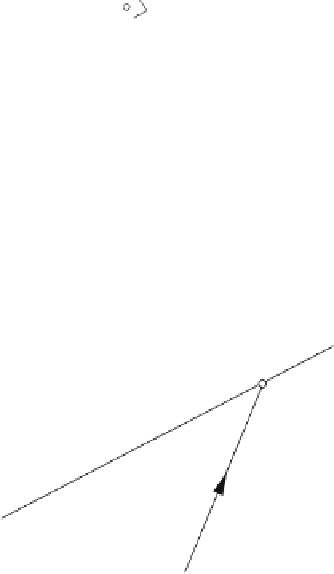Graphics Reference
In-Depth Information
P
C
p
ˆ
c
n
O
Figure 3.5.
Step 3
Extend the diagram to include the vector
−
CP, which completes the second path from O to P,
as shown in Fig. 3.6.
P
CP
C
p
ˆ
c
n
O
Figure 3.6.
We can now write
−
OP
=
−
OC
+
−
CP. Substituting vector names, we find that
+
−
CP
p
=
c
n
ˆ
(3.5)
Although we know c and
n
as well as the fact that
p
points to any point on the line, we do not
know
−
CP. Somehow,
−
CP has to be eliminated, which can be achieved by the following cunning
subterfuge.
Remembering that the dot product of two perpendicular vectors is zero, c
ˆ
·
−
CP must equal
n
ˆ
·
−
CP
zero. In fact, the scalar c is superfluous; therefore,
0.
Unfortunately, Eq. (3.5) does not contain such a term, but there is nothing to stop us from
introducing one by multiplying Eq. (3.5) by
n
ˆ
=
n
using the dot product:
ˆ
·
−
CP
n
ˆ
·
p
=
c
n
ˆ
·ˆ
n
+ˆ
n
which now reduces to
n
ˆ
·
p
=
c
n
ˆ
·ˆ
n
(3.6)










